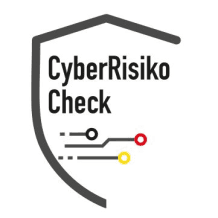Data Protection Impact Assessment (DPIA) is a central tool for systematically identifying, evaluating, and deriving appropriate measures for the risks associated with handling personal data. Given the ongoing digitalization and the extensive collection, processing, and analysis of data that accompanies it, addressing data protection risks is essential. Businesses, authorities, and organizations are called upon to conduct a structured and systematic evaluation of their processes to recognize and avoid potential negative impacts on privacy at an early stage.
The core of the DPIA is the analysis of processing operations that may pose a high risk to the rights and freedoms of affected individuals. Conducting a data protection impact assessment requires interdisciplinary collaboration, in which data protection officers, IT specialists, and legal experts work closely together. A detailed concept is developed that covers all aspects of data processing – from data collection to storage and transmission. This is critical to ensure a high level of protection and to meet legal requirements, such as those stipulated by the General Data Protection Regulation (GDPR).
W-Questions about the DPIA
As part of comprehensive information about data protection impact assessments, it is useful to address key W-questions:
WHAT is a Data Protection Impact Assessment (DPIA)? A DPIA is a systematic process for assessing the risks that may arise from the processing of personal data. Individual processing operations are examined in detail to identify and evaluate potential threats to privacy and other fundamental rights. The DPIA thus serves as a preventive instrument by highlighting early on where and to what extent risks may occur.
WHY is a DPIA necessary? The necessity of a data protection impact assessment arises from several reasons: on the one hand, it is a key means of ensuring compliance with the GDPR and integrating data protection into everyday business operations. On the other hand, the DPIA helps to strengthen the trust of customers, employees, and business partners by signaling that the company takes data protection seriously and proactively minimizes risks. Additionally, the DPIA helps to avoid financial and legal consequences that may arise from data protection violations.
WHEN must a DPIA be conducted? A data protection impact assessment is usually required when a new or changed data processing operation may pose significant risks to the rights and freedoms of affected individuals. This particularly concerns processing operations that involve innovative technical procedures or in which large volumes of data are processed. Regular reviews and updates of the DPIA are recommended to respond to technological and organizational changes.
WHO is responsible for conducting a DPIA? The responsibility for conducting a DPIA typically lies with the data controller – that is, the organization or company that decides on the data. This process is often supported by an internal data protection officer, external consultants, as well as departments directly involved in data processing. This collaboration ensures that all relevant competencies and perspectives are taken into account and a comprehensive assessment of the risks is made.
HOW is a DPIA conducted? The conduct of a data protection impact assessment takes place in several systematic steps. First, the specific processing process is described and the associated data flows are mapped. Then, potential risks are identified and evaluated. This process generally involves the application of standardized methods and tools specifically tailored to risk assessment in data protection. Finally, measures to mitigate the identified risks are defined and a monitoring mechanism is established. This structured approach ensures that all relevant risks are captured and appropriate countermeasures are implemented.
WHERE does the DPIA process apply? DPIA is applied in nearly all areas where personal data is processed. It is particularly relevant in sectors such as healthcare, finance, or large online platforms that process a variety of sensitive information. Public institutions and authorities also use DPIA to ensure safe handling of citizens' data. The use of the DPIA also extends to the field of artificial intelligence, where automated decision-making processes and the use of machine learning pose a particular challenge for data protection.
The methodological approach to a data protection impact assessment can be divided into several phases:
Analysis and Description of the Processing Operation Initially, the planned or already existing data processing operation is documented in detail. This includes the description of the data collected, the purpose of the processing, the systems involved, and the associated data flows. It is important to identify all interfaces and interactions between the systems to obtain a comprehensive picture of data processing. This phase forms the foundation for the subsequent risk analysis.
Identification of Potential Risks In the next phase, the processing operation undergoes a structured risk assessment. Potential vulnerabilities and risks that could impair the rights and freedoms of affected individuals are identified. Risks may arise in connection with unauthorized data access, insufficient security measures, or lack of transparency towards those affected. Standardized risk models are used to help quantify and evaluate the risks.
Assessment and Prioritization of Risks After identifying the risks, their assessment regarding likelihood and impact is performed. Different scenarios are simulated to determine which risks need to be addressed as a priority. This prioritization allows for the efficient use of available resources and the development of targeted risk mitigation measures.
Development of Countermeasures Based on the conducted assessments, concrete measures are defined to help reduce the identified risks to an acceptable level. These countermeasures may be technical in nature, such as implementing modern encryption techniques, or organizational, such as establishing strict access rules and regular training for employees. In this context, it is essential to consider possible impacts on user-friendliness and operational processes.
Implementation and Monitoring After defining the measures, their implementation into practice takes place. A continuous monitoring and control system is of great importance to ensure that the implemented measures remain effective. Regular audits and adjustments as part of ongoing risk management help ensure that the data protection strategy can be dynamically adapted to new circumstances and threats.
Documentation and Communication A central component of the DPIA is the comprehensive documentation of all steps taken, assessments made, and measures put in place. This documentation serves not only for internal control purposes but also forms the basis for regulatory reviews. Transparent communication of the results to affected individuals and internal stakeholders promotes trust in the handling of sensitive data.
Practical Examples and Challenges In the practical implementation of a data protection impact assessment, there are numerous success models, but also challenges. Companies that proactively engage with the topic of DPIA benefit from a holistic risk strategy that takes into account both legal requirements and operational necessities. One example is using DPIA in the development of new IT systems. When implementing innovative technologies such as cloud services or IoT platforms, the focus often lies on how data can be securely integrated into these systems. Early risk analysis can help identify vulnerabilities and plan corresponding measures in advance. This not only prevents potential data protection violations but also ensures the long-term success of innovative projects.
Another practical example concerns the healthcare sector, where processing sensitive health data poses particular demands on data protection. Healthcare institutions use DPIA to ensure that the processing and storage of patient data occurs under strict security and data protection requirements. Here, particular attention is paid to ensure that all possible accesses and data transfers are well documented and secured, to maintain the high trust relationship between patients and healthcare.




